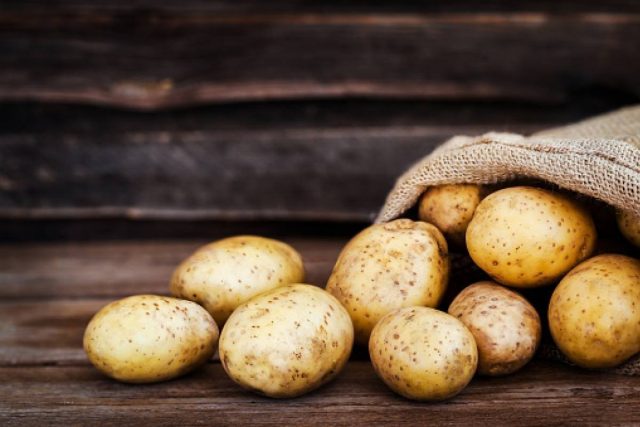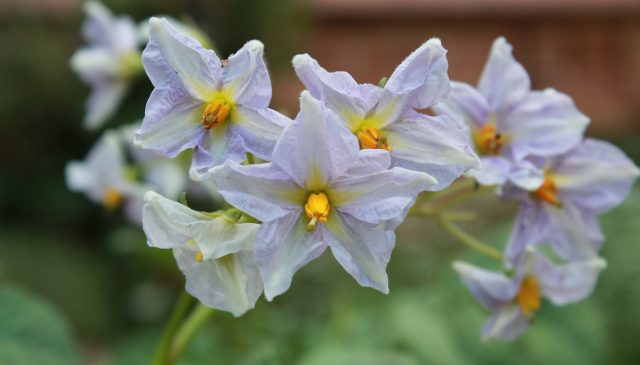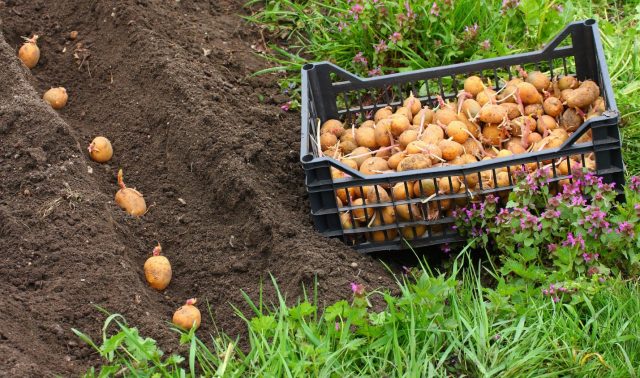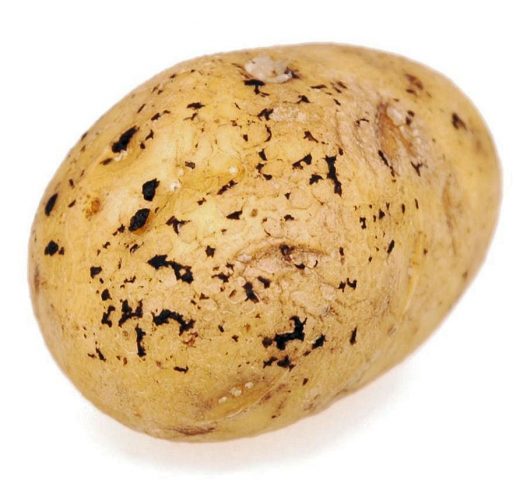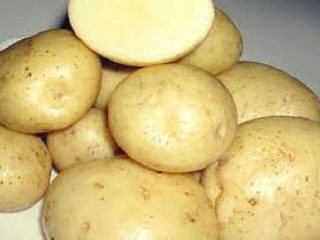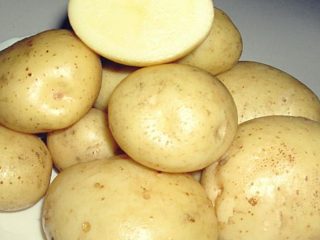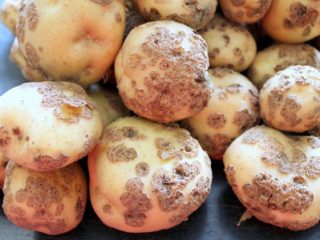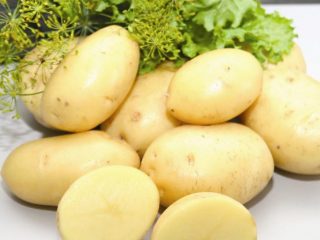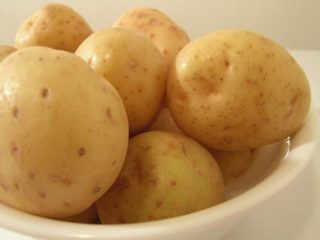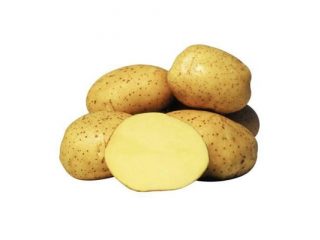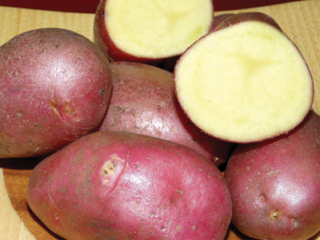Content
At the beginning of the 20th century, on the basis of a station for breeding new varieties of potatoes (research institute in the Moscow region), breeder A. Lorch created his debut potato variety, named after the scientist. The crop is zoned in the Central Black Earth region and is intended for the food industry. The variety quickly gained popularity and was included in the State Register in 1931. For more than 80 years, it has been one of the five most popular varieties grown in central Russia. For those who are not familiar with the culture, a description of the Lorch potato variety, photos and reviews will help to get a general idea of the plant.
Description of the potato variety Lorch
Lorch potatoes are a mid-late variety; after planting, they sprout within 14 days; after 120 days, the tubers reach biological ripeness and are ready for harvest. The potato variety Lorch, shown in the photo, according to the originator’s description, is a frost-resistant crop.In case of damage to young shoots by returning frosts, they are completely restored within a week, the negative factor does not affect fruiting, and the ripening period does not increase.
The culture is light-loving and requires sufficient ultraviolet light for photosynthesis. In the shade, the growing season slows down, the tops lighten, stretch, and become brittle. Tubers are formed in smaller quantities and with reduced weight; small root crops predominate in the bush. The variety is highly drought-resistant; it tolerates soil drying out normally; waterlogging causes rotting of the root system and stems, which causes the development of fungal infections.
External characteristics of Lorch potatoes:
- A tall plant, reaching a height of 80 cm. It forms five powerful, thick stems. The bush is compact, the tops grow upright and are not spreading. If there is excess moisture, the stems do not lose their elasticity and do not break.
- The leaves are light green, large, opposite, attached to a long petiole. The leaf blade is round in shape, slightly dissected, the surface is corrugated, densely pubescent with veins. The edges are wavy.
- The flowers are simple with the presence of anthocyanin along the edges, collected in panicles, the core is bright yellow. The variety produces a small amount of berries.
- The root system does not grow laterally, occupies only the space of the hole, and forms 10–12 root crops.
- Tubers of the same size, weighing 90–115 g, oval, non-marketable potatoes no more than 2% per bush.
- The peel is thin, yellow, with fine pigmentation, smooth, the eyes are small, recessed, present in small quantities.
- The pulp is dense, juicy, white, does not oxidize when peeled, and does not darken during cooking.
Lorch potatoes store well and withstand transportation well. Created for the food industry, suitable for cultivation in summer cottages and garden plots.
Taste qualities of Lorch potatoes
Before entering the variety into the State Register, the crop underwent tasting testing. On a 5-point scale it received a rating of 4.8 points. 20% of the chemical composition of tubers is starch. In the food industry, the variety is used for the production of starch. In cooking, potatoes are used to prepare first courses and side dishes. The variety has proven itself well in stewing and frying. The fruits retain their shape after hot processing. The potatoes are moderately crumbly with a characteristic taste.
Pros and cons of the variety
According to the characteristics of the variety and reviews of Lorch potatoes, the crop has a number of advantages:
- high yield. Fruiting does not depend on weather conditions;
- frost resistance. After freezing of the seedlings, replacement quickly forms;
- fruits of equalized mass, convenient for mechanized harvesting;
- root vegetables with a high tasting rating, universal use, with optimal content of starch and dry matter;
- undemanding to agricultural technology and soil composition;
- drought resistance, no watering required;
- long-term storage and good transportability.
The disadvantages of potatoes are: poor tolerance to waterlogged soil, average resistance to infections.
Planting and caring for Lorch potatoes
To shorten the growing season, the characteristics of Lorch potatoes indicate that it is better to plant mid-late varieties with germinated seeds.The optimal length of sprouts is 3–4 cm; longer ones break when planted, and the potatoes will take time to form new ones, and the ripening time is extended.
Planting material is harvested in boxes in the fall, they are taken out of storage, placed in a lighted room, and germinated at a temperature not exceeding +15 0C. Ensure normal air circulation in the room.
Seeds can be selected in the spring (March) from the total mass of potatoes. Place in boxes or spread in a thin layer on a flat, well-lit surface. Planting material will be ready in 45 days. Potatoes are planted in early May.
Selection and preparation of a landing site
A place for planting Lorch potatoes is allocated in a sunny area. Lowlands where rainwater accumulates are not suitable for the variety; potatoes should not be planted in an area with nearby groundwater. The soil composition should be neutral, light, with good drainage. The plot is prepared in the fall, 30 days after harvest:
- They plow or dig by hand.
- Remove the remaining tops weeds and roots.
- If the soil composition is acidic, products containing alkali are applied.
- They spread organic matter.
It is not recommended to use a lot of organic fertilizer. A high concentration of nitrogen will affect the weight of the fruit. The bush will look powerful, but the tubers will be small. In the spring, the area is dug up again and ammonium nitrate is added.
Preparation of planting material
Before planting potatoes in the garden, the germinated seeds are subjected to stratification. The temperature is lowered within 2 weeks. Hardening will ensure rapid vegetation after placing the tubers in the ground.If the seed potatoes are large, they are cut into pieces a week before planting. Each fragment must contain 2 full sprouts. Potatoes are treated with copper sulfate or placed in a solution of boric acid and manganese. This measure will prevent the development of fungal diseases.
Landing rules
Potatoes of the Lorch variety are planted in two ways: in holes or furrows. If the bed is small, it is advisable to plant under a shovel (in holes); on a large plot, plant in furrows. The seed distribution pattern is the same in both cases:
- Planting recess – 15 cm, row spacing – 50 cm, distance between nests – 30 cm. Per 1 m2 – 5–6 bushes.
- Tubers are placed in 2 pieces. into the nest, the distance between them is 8 cm.
- Cover the top with a layer (5 cm) of peat mixed with ash.
- Cover with soil.
Lay out the potatoes with the sprouts down, pick them up carefully so as not to damage the shoots, and do not water them after planting.
Watering and fertilizing
Potatoes of the Lorch variety are a drought-resistant crop that tolerate dry soil better than excess moisture. Seasonal rains are enough for the bushes; watering is not required for the growing season. If there is an abnormal drought, the plant is watered abundantly under the bush in the furrows once a week.
Fertilizers are applied 30 days after planting the seed tubers, using urea or phosphate agents. After flowering, the potatoes are given potash fertilizers. Organics are not used; the amount added during site preparation is sufficient.
Loosening and weeding
Lorch potatoes are not touched until the seedlings define clear row boundaries. At the beginning of the potato growing season, weeds grow intensively on fertile soil, so loosening and weeding coincide in time.The frequency of weeding is determined by the appearance of weeds; they are removed constantly until the variety fades.
Hilling
Single nests are covered with earth on all sides, creating a hill, and potatoes are mounded up to the top leaves. Seeds planted in furrows are covered on both sides in the form of a ridge. Sequence of work:
- The first hilling - the tops grew to 20 cm.
- The second - after 3 weeks.
- After 10 days, the embankment is trimmed and the top layer of soil is loosened.
After flowering, potatoes are not afraid of weeds, the tops no longer grow, all the nutrients go towards the growth and maturation of the tubers. The plant no longer needs care.
Diseases and pests
Hybrids are obtained in laboratory conditions; at the genetic level, they have high immunity to infections and pests. The Lorch potato is a varietal representative of the crop, created by cross-pollination of varieties in the natural environment. Therefore, the plant’s resistance is average.
During the rainy season and low temperatures, Lorch potatoes are affected by late blight. The fungal infection appears in the second half of summer as brown spots on the tops. The disease can destroy the plant, including tubers. For preventive purposes, planting material is treated with manganese and boric acid. At the first signs of the disease, antifungal agents are used: “Exiol”, “Oxihumate”.
Rhizoctonia is a threat to potatoes, a fungal disease that develops at any stage of the growing season. Initially localized on the leaves, the lesion spreads to the tops and root crops. The disease develops quickly, the infection quickly spreads to neighboring plants, and within two weeks it can completely destroy a potato plantation.Signs of rhizoctonia: black spots on tubers, dry areas on the tops. Infected plants are removed from the site and burned. For the next three years, the site is not used for planting nightshade crops. Potatoes are treated with Agat-25 or Baktofit.
The Colorado potato beetle parasitizes crops. If there are few larvae, they are collected by hand and burned. When insects spread massively, the bushes are treated with Actellik or Decis. The root-knot nematode causes great damage to the crop, the parasite attacks the root system, the plant lags behind in development, the leaves dry out, the tops are exposed, the tubers turn out to be small and underdeveloped. It will not be possible to completely destroy the worm and save the plant. There are no remedies against nematodes. The plant is completely removed from the ground, removed from the site, and the planting site is poured with boiling water. Neighboring plants are sprayed with Aldicarb and Heterophos.
Potato yield
According to the characteristics of the variety and reviews from vegetable growers, Lorch potatoes are highly productive. Over the course of many years of cultivation, the variety does not lose its leading position in terms of yield and taste. The crop grows on any soil, is frost-resistant, tolerates drought well, these qualities are a guarantee of crop stability. One bush of the Lorch variety produces about 2 kg of root crops per 1 m2 10–12 kg are collected.
Harvesting and storage
The mid-late variety Lorch reaches biological ripeness in early September. Harvesting is carried out before the onset of the first frost. After ripening, the tubers are well preserved in the ground for a long time and do not lose their presentation or taste. An indicator that the growing season is over and the root crops are ready for harvesting is the condition of the tops; they dry out and fall onto the garden bed.
Potatoes removed from the soil are poured into a dark place. It is not recommended to leave tubers in the light, as the surface turns dark green. The cause of pigmentation is corned beef, a toxic substance whose synthesis occurs under the influence of ultraviolet radiation.
Before storing, root vegetables are spread in a thin layer to dry. Then the potatoes are sorted, damaged ones are removed, and distributed according to the mass.
Planting material is collected in separate boxes and taken out to an area open to the sun. The synthesis of solanine will protect the crop from rodents and strengthen immunity to infection.
Tubers are stored until the beginning of June, losses are small, within 4%.
Conclusion
The description of the Lorch potato variety, photos and reviews from vegetable growers fully correspond to the characteristics given by the originator. The variety is mid-late, suitable for cultivation in private plots and large farm fields. In the food industry it is used to produce starch. The crop is grown using standard agricultural technology, the yield is high, and the indicator does not depend on weather conditions.
